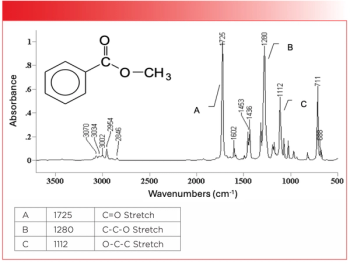
- IR Spectroscopy for Today's Spectroscopists
- Volume 36
- Issue S8
Advancing Spectroscopy into the Nanoworld of Materials Science: Vibrational Nanoscopy and Infrared Nanoscopy
Infrared nanoscopy is a valuable new spectroscopy tool for exploring the nanoscale of materials science. Mun Seok Jeong of Sungkyunkwan University in Korea explains.
Mun Seok Jeong of the Department of Energy Science at Sungkyunkwan University in Korea is exploring the nanoscale of material science using a suite of new spectroscopy tools. A prominent analytical tool for this nanoanalysis is infrared nanoscopy. We recently spoke to him about his work.
You have used infrared nanoscopy to measure and study the degradation of organic–inorganic hybrid perovskite (OHP) films in the field of optoelectronics (1). Why is this important, and what is unique about the application of infrared nanoscopy to this problem?
One of the significant issues of the perovskite material is its long-term stability due to environmental degradation. Generally, perovskites decompose easily when exposed to environmental factors such as oxygen, moisture, heat and light. Therefore, there are still difficulties in commercialization using the perovskite materials. Many studies have been investigated, but it is still insufficient to clarify this issue. Herein, we conducted infrared (IR) nanoscopy measurement to investigate the degradation of OHP film in nanoscale. The IR nanoscopy is a high spatial resolution chemical analysis apparatus to measure changes in physical chemistry properties on a nanoscale that were not previously identified. As a result, we obtained the clear mechanism of degradation in perovskite film. This research is a unique approach in the field of nano chemistry research because it can be intuitively investigated in the nanoscale region (~10 nm) using the AFM-tip.
How would you describe the differences between classic infrared microspectroscopy and infrared nanoscopy?
Unlike classic IR microspectroscopy which can investigate the materials with several tens of micrometer spatial resolution, IR nanoscopy combined with AFM can identify substances in nanoscale region. Also, this technique can observe the structural and chemical properties of a sample simultaneously with the tens of nanometer scales. For realizing nanoscale spatial resolution, the amplitude of ring-down motions of the atomic force microscope (AFM) tip on the sample due to thermal expansion of sample at certain wavenumber were recorded along the incident IR laser. Finally we can achieve the mapping image of chemical vibrational modes and topography with ~10 nm spatial resolution.
How was infrared nanoscopy developed?
We purchased a commercial instrument system and adapted it for our work.
You have also applied infrared nanoscopy to identify defects and to improve the quality and performance of low-dimensional organic lead halide perovskites (OHPs), which comprise white light-emitting diodes (LEDs) (2). What has infrared nanoscopy revealed for this application that other analytical techniques have not shown?
The white emission in 2D OHPs have been explained by self-trapped exciton at polaron states (STEs). Large organic cation for 2D OHP structure induces the size restriction of polaron and distortion of PbX6 octahedrons resulting in unique polaron properties. In this point of view, the direct observation of organic cation at nanoscale is very important in 2D OHP studies. Other nanoscale mapping techniques such as photoluminescence (PL) or Raman scattering hindered to observe organic cation directly because of indirect effect of organic cation in band structure or high photoluminescence intensity. However, using IR nanoscopy, the effects of organic cations and moisture related to white emission in 2D OHP can be observed simultaneously. Herein, we revealed that the correlation of white emission and organic cation defect site by using the IR nanoscopy. In addition, white emission is not only originated from STEs, but it also came from defect sites by water molecules.
What is most important about the quality of white-light emission in LEDs?
The LEDs are the systems with several materials such as active layer, electrode, and charge injection layers. The performance of LEDs with outstanding materials can be poor without understanding of interaction with each material. Thus, the most important for better performance of white-light emission in LEDs is the understanding of interaction with materials. For that, we study single or heterostructure of material step by step.
References
(1) H.M. Yu, H.M. Oh, D.Y. Park, and M.S. Jeong, J. Phys. Chem. C 124(6), 3915–3922 (2020).
(2) D.Y. Park, S.J. An, C. Lee, D.A. Nguyen, K.N. Lee, and M.S. Jeong, J. Phys. Chem. Lett. 10(24), 7942–7948 (2019).
(3) D.H. Kim, C. Lee, B.G. Jeong, S.H. Kim, and M.S. Jeong, Nanophotonics 9(9), 2989–2996 (2020).
(4) C. Lee, B.G. Jeong, S.J. Yun, Y.H. Lee, S.M. Lee, S.M. and M.S. Jeong, ACS Nano 12(10), 9982–9990 (2018).
(5) K.D. Park, M.B. Raschke, J.M. Atkin, Y.H. Lee, and M.S. Jeong, Adv. Mater. 29(7), 1603601 (2017). doi.org/10.1002/adma.201603601.
(6) C. Lee, S.T. Kim, B.G. Jeong, S.J. Yun, Y.J. Song, Y.H. Lee, D.J. Park, and M.S. Jeong, Sci. Rep. 7, 40810 (2017).
Mun Seok Jeong is an associate professor at Department of Energy Science, Sungkyunkwan University (SKKU), Korea. He received his PhD from Chonbuk National University in 2000. He then worked as a postdoctoral research associate at University of Illinois at Urbana Champaign, USA (2000-2001), senior research scientist at Electronics and Telecommunications Research Institute (ETRI), Korea (2001-2003), and principal research scientist at Advanced Photonics Research Institute, GIST, Korea (2003-2013). He joined SKKU in 2013. His current research is seeking new physics in the emerging materials including 2-D nanoplates and halide perovskite by novel approaches in synthesis, optical characterization, and optoelectronic devices.
Jerome Workman, Jr. is the Senior Technical Editor for LCGC and Spectroscopy. Direct correspondence to:
Articles in this issue
Newsletter
Get essential updates on the latest spectroscopy technologies, regulatory standards, and best practices—subscribe today to Spectroscopy.




